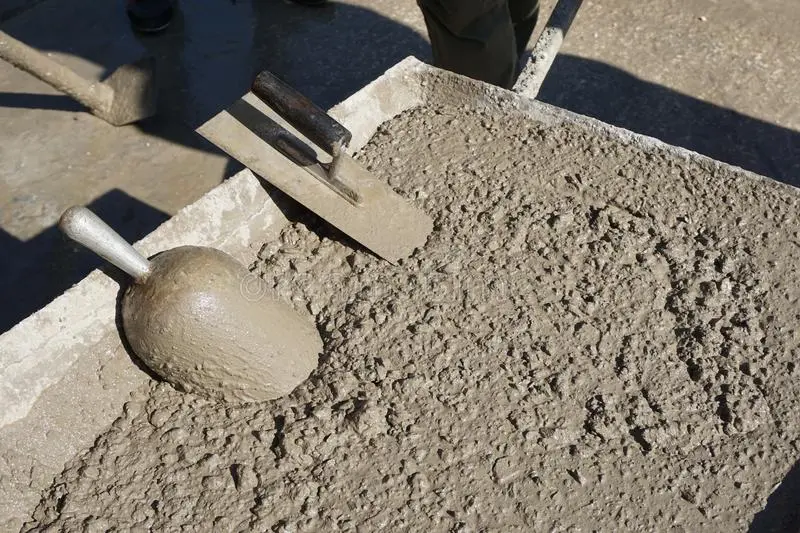With the advancements and increasing population all around the globe; the trends of construction and high-rise buildings have also increased. Soil, asphalt, and concrete are the three basic construction materials that are used in construction for making strong building structures. These materials have unique characteristics and without them, construction isn’t possible. From base to structure, concrete is the most important element of the construction site. Concrete Testing in Edmonton is an industrial material that accrues the properties of rock and is a mixture of elements closely bound together. This gives concrete a stronger and tougher outlook for the structures.
Composition of Concrete
Concrete is a combination of gravel, sand, crushed rock, and/or other masses that are bonded together by a toughened paste of cement and water. The characteristics of concrete vary reliant on the ingredients used and their quantities in the mix. There are five concrete components that make it a magical construction material. Concrete testing technician in Edmonton recommends these constituents to be part of concrete for specific properties.
- Cement/Binder
Cement is the best binder mixed with water which is used to produce concrete. Cement paste sets and toughens by hydration, both underwater and in the air. The core base materials, like Portland cement, include limestone, clay, and marl which are combined in definite proportions. Such raw mix is heated at about 1,450 °C to form a cinder which is later crushed to the eminent fineness of the cement. The standard splits the types of cement into five major types recommended as follows:
- CEM I Portland
- CEM II Composite
- CEM III Blast furnace
- CEM IV Pozzolan
- CEM V Composite
- Aggregates
Aggregates consist of sand and gravel for making the grain skeleton of the concrete. All voids within this skeleton have to be packed with binder paste as much as possible. These concrete aggregates recapitulate approximately 80% of the concrete mass and 70% of the concrete volume. The finest use of aggregate size improves concrete quality testing in Edmonton.
Fluvial or glacial aggregates can occur naturally while industrially produced aggregates are lightweight as well as recycled easily. Concrete quality testing in Edmonton; they are cleaned and graded in industrialized facilities by mechanical procedures such as washing, crushing, screening, and mixing together. Moreover, concrete aggregates should have a robust bond with the tough cement paste, should not restrict the cement hardening, and must not have a negative effect on concrete strength.

- Admixtures
Admixtures are powders or liquids which are mixed into the concrete during mingling in small amounts. Quantity is usually definite based on the cement content. Moreover, concrete admixtures have a significant influence on the fresh and/or tough concrete properties as well as Admixtures can act physically or chemically.
- Additions and Supplementary Cementitious Materials (SCM)
SCM analysis is important in Concrete Testing in Edmonton and is defined as finely divided materials employed in concrete to improve or attain desired new and hardened concrete properties. There are two inorganic types of SCM:
- Type-I: Nearly inert additions
- Type II: Pozzolanic or latent hydraulic additions
- Water
The appropriateness of water for concrete creation depends on its origin. Water according to Standard lists the following types:
- Groundwater: It may be suitable for concrete but must be tested. Water recuperated from procedures in the concrete industry are generally suitable for concrete but the necessities must be met.
- Drinking water: Highly suitable for concrete but need to be tested.
- Brackish or Sea water: Such type of water may be employed for non-reinforced concrete but isn’t suitable for reinforced or toughened concrete. The determined tolerable chloride content in the concrete must be perceived for concrete with steel reinforcement or implanted metal parts.
- Natural surface water: It is suitable for concrete but must be tested.
- Wastewater: Not recommended and suitable for concrete. The combined water is a mixture of water recovered from different sources.
Factors Affecting Concrete Strength
Besides enriched properties, concrete has the most important property of compressive strength. This strength of concrete is resolute in the laboratory in controlled conditions with concrete testing technicians in Edmonton. On the basis of concrete quality control testing in Edmonton, we judge the superiority of concrete. But occasionally the strength test outcomes vary so extensively that it develops difficult to reach any conclusion. This dissimilarity in test results can be evaded by taking the essential steps. Consider these 5 factors which influence the strength of concrete when verified for compressive strength. These features are mentioned below.
- Height to Diameter Ratio
- Shape and Size of Test Specimens
- Rate of Application of Weight
- Moisture Content in the Test Sample
- The material employed for Capping
Height to Diameter Ratio
Generally, for concrete testing in Edmonton for cylindrical concrete specimens, the height-to-diameter ratio is 2. But occasionally it is not conceivable to keep the height/diameter ratio equal to 2 once the core is expurgated from the airfield or road pavement or any part of the building structure. Considering the length of the core is too long, it can be cropped to an h/d ratio of 2:1, before concrete testing in Edmonton. However, if the length of the core specimen is short, it is essential to relate a correction factor to the test result. Making a correction factor according to the height/diameter ratio of the test specimen after capping is attained. The multiplication of this correction factor and the determined compressive strength will provide the improved compressive strength which is equivalent to the strength of a cylindrical object having a height/diameter ratio of 2.

Shape and Size of Test Specimens
The shape and size of test specimens affect the strength of concrete testing in Edmonton to a large extent. If two cubes of dissimilar sizes but manufactured from the same concrete, are verified to show different test results. For instance, the strength of a cube sample 10 cm in size is 10% less than the strength of a cube sample 15 cm in size. If two cubes of altered shapes (considering cube & cylinder) are tested, they will show changed test results. From the experiment, it has been created that the strength of a cylinder of size 15 cm diameter as well as 30 cm long is equal to 0.8 times the strength of a 15 cm cube.
Rate of Application of Weight
The rate of application of weight has a substantial influence on the strength when evaluated with Soil Testing Edmonton. If the rate of application of weight is sluggish, or there is about time lag. Then it will affect lower values of strength. The purpose behind this is a creep. Due to the slower application of weight, the sample will undergo some volume of creep which in turn upsurges the strain. Consequently, increased strain is accountable for the failure of the test sample, resulting in lower strength values.
Moisture Content in the Test Sample
The existence of moisture content in the test sample also traces the test result to a prodigious extent. If two cubes (wet & dry) prepared from similar concrete, are verified at the same stage, then the dry cube will offer higher strength than the wet cube reason is the reduction of cohesion of concrete constituents due to the presence of water. To acquire reproducible results, it is directed that the concrete cylinders or cubes should be tested instantly on the elimination from the curing tank as concrete testing in Edmonton in dry conditions will vary largely in results.
The Material Employed for Capping
There are numerous methods obtainable for capping concrete cylinders such as gypsum capping, sulfur capping, & cement mortar capping, etc. The kind of capping material employed has also some quantity of effect on the rate obtained from the strength test. For a particular construction project, the suggested method of capping the concrete cylinders should be one. This will help to avoid wide differences in test results and can evaluate the quality of concrete.
Central Material Testing is a Canadian-based material testing company offering different Materials Testing in Edmonton and quality control testing for reliable construction projects. We commit to perfect test results and offer services to private as well as government projects for testing and quality control. Get the quote with our 24/7 support system.



Leave a Reply